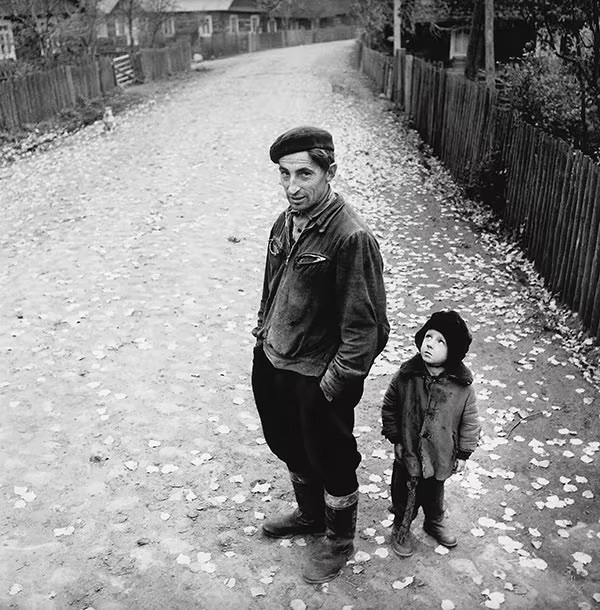I came across the name Antanas Sutkus just recently and saw some of his work while in Paris, thanks to Liza Fetissova. He has become my coup de ❤️ of this trip. Despite my ignorance, he is a renowned (worldwide) Lithuanian photographer, now 84, who has often been regarded as a counterpart to Henri Cartier-Bresson. Both photographers are celebrated for their contributions to the world of photography, and their works share certain similarities while also showcasing unique individual styles and cultural influences. Like Cartier-Bresson, Sutkus is known for his mastery of capturing the “decisive moment” – that split-second when all the elements of a scene come together to create a compelling and meaningful image. Just like Cartier-Bresson, Sutkus has an exceptional ability to anticipate and seize that moment and to tell profound stories about the human condition. Whether it is a gesture, the subtle expression of a face, or a poignant interaction between subjects, like this little girl and her mother in the case of Sutkus, both photographers excel in recognizing and immortalizing these instants of pure poetry. Both have been committed to black and white throughout their career, playing with the different shades of grey to create timeless pictures. While Cartier-Bresson has travelled throughout the world and is well known for his candid street photography globally, Sutkus’s work centers on the people and landscapes of Lithuania and the surrounding Baltic area. This focus provides a unique cultural perspective and offers a valuable insight into the daily lives and experiences of the people living in this particular part of the world, especially vivid today. Sutkus’s photographs are intimate and authentic, talk about the resilience, joy, and struggles of ordinary people during the social and political turmoil of the Soviet and post-Soviet eras. As Antanas Sutkus and Henri Cartier-Bresson stand as counterparts in the world of photography, both leaving a lasting impact on the medium through their mastery of the decisive moment and their deep respect for the human condition, I wonder why the Fondation Henri Cartier-Bresson has not yet organised a dialogue between these two masters. Maybe time to ask that question?




